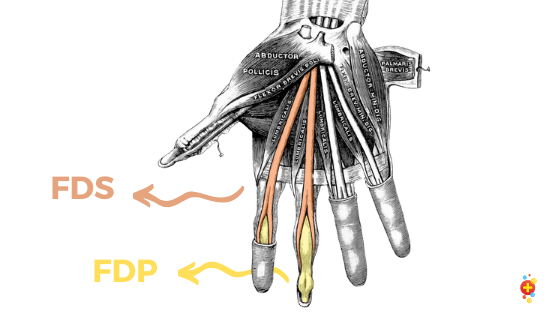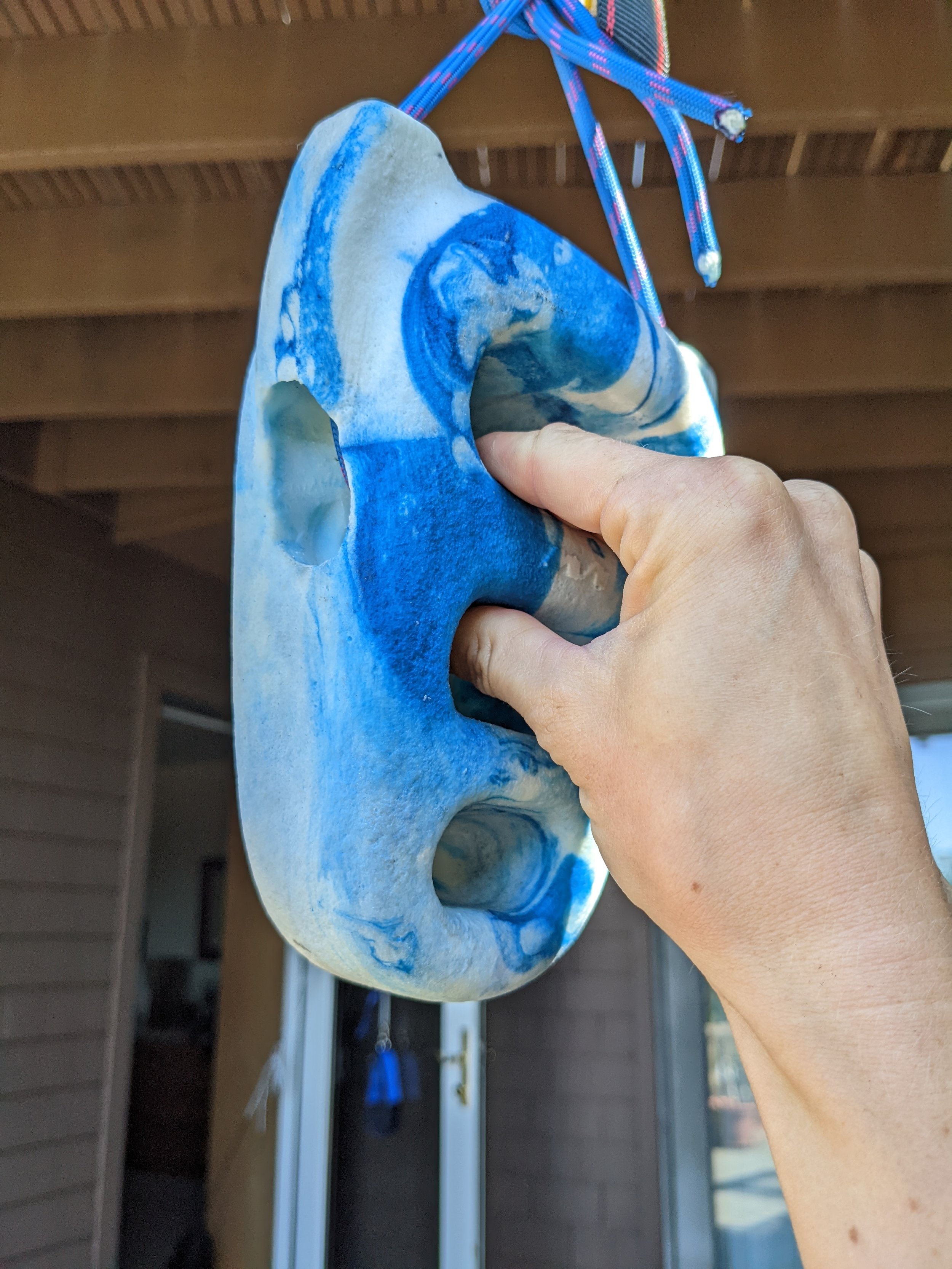Finger Flexor Injuries
Differential diagnosis of finger pain can be challenging, with up to 20 conditions to consider. The two tendons that we are going to focus on in this post are the flexor digitorum profundus (FDP) and the flexor digitorum superficialis (FDS). These tendons bend your fingers downwards towards your palm, and are attached to muscles that run up the inside of your forearm.
Makeup of these tendons:
Type I collagen formed by fibroblast cells.
Tendons are not as well vascularized (don’t have as much blood flow) as muscle tissue. Tendons rely more on synovial fluid for nutrition, potentially limiting how quickly they heal after injury.
Some examples of how tendons get injured:
Overuse - If there is a significant weakness somewhere else in the hand, or up the chain (wrist, elbow, or shoulder) the finger flexors can work over time and be injured.
Trauma- Reaching for a pocket or grabbing a hold at max force can shock load the tendon and cause a small tear or even pull the bone so hard that it causes a small fracture.
Range of motion deficits- If the fingers are stiff and can’t fully extend, and then it gets loaded heavily into the end range of motion.
How to diagnose a tendon injury:
Resisted testing- Check out this video
*fun fact! FDS has individual muscle bellies for each finger, but sometimes the ring and pinky finger can be tethered. FDP has 1 muscle belly for all 4 tendons.
Stretch
Stretching the fingers backwards should reproduce your pain.
Palpation
Poking around the tendon will be tender. A common complaint, and way to differentiate between tendon and pulley, is that you may have pain/ soreness up in the forearm. Specifically the muscle belly in the forearm of the FDS and FDP will be sore or painful to palpation/ massage.
* If these tests don’t reproduce your pain, or you are unsure, it may be wise to seek a Physical Therapist who can further examine your specific issue and differentiate between the tendon and other tissue diagnosis in the finger.
Healing time:
‘The tendon gains its loading capacity after 12 wk of healing and sporting activities are allowed 4 mo after injury at the earliest. The remodeling process can last up to 12 mo.’ This is something patients can be surprised by. It takes up to a year for this type of collagen to be fully formed and strong again. That doesn’t mean you won’t feel a lot better before this timeline, but it’s something that’s helpful to be aware of.
So you think you may have strained your finger flexor? Here are some starter exercises!
Finger massage: Use a acupressure ring to massage your finger for 2-3 minutes.
2. Tendon glides x 10 reps, 2 sets
3. Finger flexion pulls starting with weight that is pain free to pull, 15 reps, 2 sets
4. Finger extension: reps to fatigue, 2 sets
5. Finger flexor isometrics/ hang board:
start with 10% of body weight: I recommend standing on a scale , using a tindeq, or a crane scale to accurately measure the load throughout training.
30 seconds on 30 seconds off, 3 reps each hold. *Must be pain free during and after exercise. If it’s not pain free, then lighten the load.
Some holds to try are 3 finger drag, pinch, 2 finger pocket, half crimp, full crimp. Like so…
These exercises will help to reduce inflammation, improve nutrition to the tendon, and start the healing process. For ideas on further exercise progressions to get back to full climbing reach out to ENPT for more information!
References:
1. Brand PW & Hollister A: Clinical mechanics of the hand, St. Louis, 1993, Mosby Year Book, pp. 317-322.
2. O Grimsby, J Rivard. Science, Theory and Clinical Application in Orthopedic Manual Physical Therapy: Applied Science and Theory. 2008
3. Schöffl I, Oppelt K, Jungert J, Schweizer A, Bayer T, Neuhuber W, et al. The influence of concentric and eccentric loading on the finger pulley system. J Biomech. 2009
4. Schöffl V. Finger pain in rock climbers: reaching the right differential diagnosis and therapy. Journal of Sports Medicine and Physical Fitness. Turin Vol 47, Iss1.
5. Schöffl V, Heid A, Küpper T. Tendon injuries of the hand. World J Orthop. 2012;3(6):62–9.
6. Schöffl V, Schweizer A. Sportclimbing related injuries and overuse syndromes. In: Seifert L, Wolf P, Schweizer A, editors. IRCRA handbook of climbing & mountaineering from science to performance. Research in sport and exercise science. London, New York: Routledge; 2016. p. 59–75.







